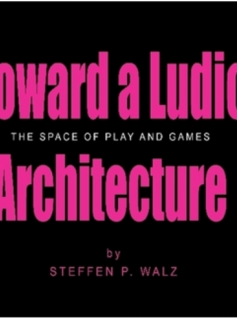Toward a Ludic Architecture
The Space of Play and Games

Whether we think of a board game, an athletic competition in a stadium, a videogame, playful social networking on the World Wide Web, an Alternate Reality Game, a location-based mobile game, or any combination thereof: Ludic activities are, have, and take place in or at, spaces. “Toward a Ludic Architecture” is a pioneering publication, architecturally framing play and games as human practices in and of space. Filling the gap in literature, Steffen P. Walz considers game design theory and practice alongside architectural theory and practice, asking: how are play and games architected? What kind of architecture do they produce and in what way does architecture program play and games? What kind of architecture could be produced by playing and gameplaying? “Toward a Ludic Architecture” is a must-read for analyzing and designing play and games from an architectural standpoint. Such a contribution is particularly applicable in an era when games extend into physical, designed space that is increasingly permeated by devices, sensors, and information networks, allowing for rules and fictions to superimpose our everyday environments. Including a maze-like, episodic, and critical discussion of interweaving “play-grounds,” “Toward a Ludic Architecture” is a playful look at the conceptual space of play and games.
